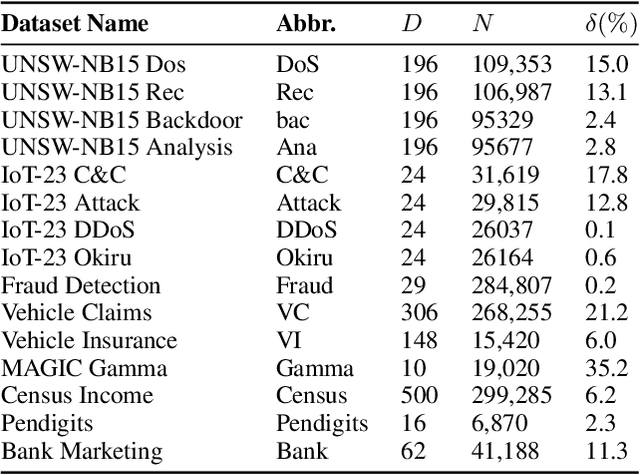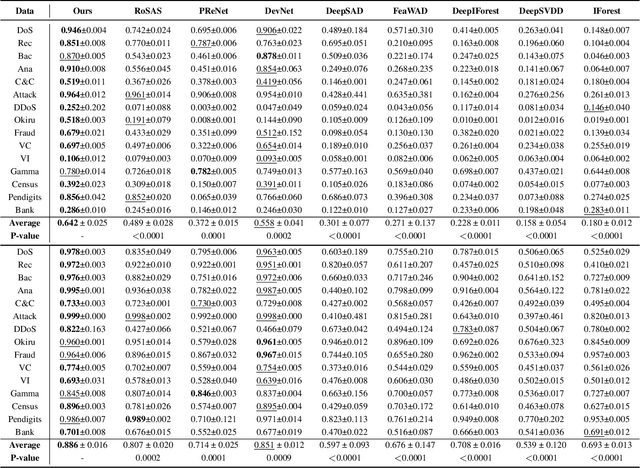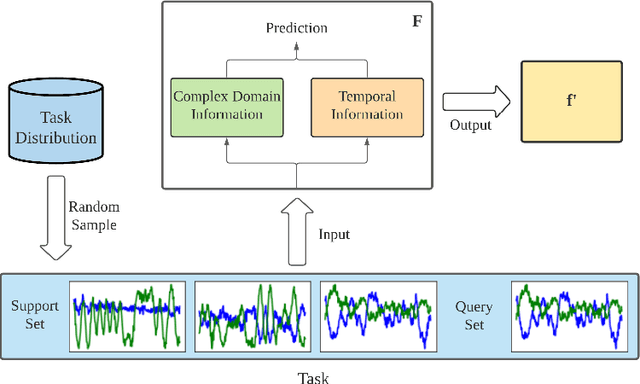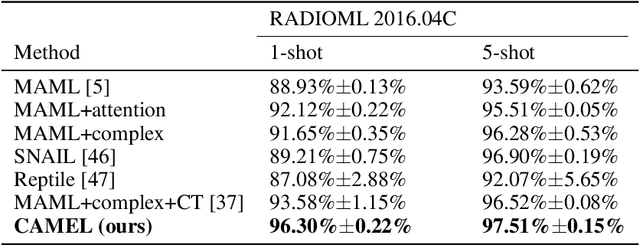Zhonghai Wu
dFLMoE: Decentralized Federated Learning via Mixture of Experts for Medical Data Analysis
Mar 13, 2025Abstract:Federated learning has wide applications in the medical field. It enables knowledge sharing among different healthcare institutes while protecting patients' privacy. However, existing federated learning systems are typically centralized, requiring clients to upload client-specific knowledge to a central server for aggregation. This centralized approach would integrate the knowledge from each client into a centralized server, and the knowledge would be already undermined during the centralized integration before it reaches back to each client. Besides, the centralized approach also creates a dependency on the central server, which may affect training stability if the server malfunctions or connections are unstable. To address these issues, we propose a decentralized federated learning framework named dFLMoE. In our framework, clients directly exchange lightweight head models with each other. After exchanging, each client treats both local and received head models as individual experts, and utilizes a client-specific Mixture of Experts (MoE) approach to make collective decisions. This design not only reduces the knowledge damage with client-specific aggregations but also removes the dependency on the central server to enhance the robustness of the framework. We validate our framework on multiple medical tasks, demonstrating that our method evidently outperforms state-of-the-art approaches under both model homogeneity and heterogeneity settings.
FedVCK: Non-IID Robust and Communication-Efficient Federated Learning via Valuable Condensed Knowledge for Medical Image Analysis
Dec 24, 2024Abstract:Federated learning has become a promising solution for collaboration among medical institutions. However, data owned by each institution would be highly heterogeneous and the distribution is always non-independent and identical distribution (non-IID), resulting in client drift and unsatisfactory performance. Despite existing federated learning methods attempting to solve the non-IID problems, they still show marginal advantages but rely on frequent communication which would incur high costs and privacy concerns. In this paper, we propose a novel federated learning method: \textbf{Fed}erated learning via \textbf{V}aluable \textbf{C}ondensed \textbf{K}nowledge (FedVCK). We enhance the quality of condensed knowledge and select the most necessary knowledge guided by models, to tackle the non-IID problem within limited communication budgets effectively. Specifically, on the client side, we condense the knowledge of each client into a small dataset and further enhance the condensation procedure with latent distribution constraints, facilitating the effective capture of high-quality knowledge. During each round, we specifically target and condense knowledge that has not been assimilated by the current model, thereby preventing unnecessary repetition of homogeneous knowledge and minimizing the frequency of communications required. On the server side, we propose relational supervised contrastive learning to provide more supervision signals to aid the global model updating. Comprehensive experiments across various medical tasks show that FedVCK can outperform state-of-the-art methods, demonstrating that it's non-IID robust and communication-efficient.
Toward Personalized Federated Node Classification in One-shot Communication
Nov 18, 2024



Abstract:Federated Graph Learning (FGL) has become a promising paradigm for collaborative training with distributed and private graph data. One-shot Federated Learning (OFL) enables collaboration in a single communication round to largely reduce communication costs and potential security concerns. However, existing OFL methods are not designed for graph data and existing FGL methods are ineffective within one communication round under both data and model heterogeneity. To mitigate this gap, we are the first to propose a one-shot personalized federated graph learning method for node classification, which is also compatible with the Secure Aggregation scheme. We estimate and aggregate the statistics of class-wise feature distribution to generate a global pseudo-graph on the server, which could be used to train a global graph model. Furthermore, We reveal the under-explored problem of existing personalized FGL methods that their personalized models are biased and neglect the ability to generalize to minorities. To achieve better personalization and generalization simultaneously, we propose a two-stage personalized training to adaptively utilize the personal information from local data and global information from the global pseudo-graph. Comprehensive experiments on 8 multi-scale graph datasets under different partitions with various settings demonstrate our superior performance over state-of-the-art baselines.
Reconstruction-based Multi-Normal Prototypes Learning for Weakly Supervised Anomaly Detection
Aug 23, 2024



Abstract:Anomaly detection is a crucial task in various domains. Most of the existing methods assume the normal sample data clusters around a single central prototype while the real data may consist of multiple categories or subgroups. In addition, existing methods always assume all unlabeled data are normal while they inevitably contain some anomalous samples. To address these issues, we propose a reconstruction-based multi-normal prototypes learning framework that leverages limited labeled anomalies in conjunction with abundant unlabeled data for anomaly detection. Specifically, we assume the normal sample data may satisfy multi-modal distribution, and utilize deep embedding clustering and contrastive learning to learn multiple normal prototypes to represent it. Additionally, we estimate the likelihood of each unlabeled sample being normal based on the multi-normal prototypes, guiding the training process to mitigate the impact of contaminated anomalies in the unlabeled data. Extensive experiments on various datasets demonstrate the superior performance of our method compared to state-of-the-art techniques.
MH-pFLGB: Model Heterogeneous personalized Federated Learning via Global Bypass for Medical Image Analysis
Jun 29, 2024Abstract:In the evolving application of medical artificial intelligence, federated learning is notable for its ability to protect training data privacy. Federated learning facilitates collaborative model development without the need to share local data from healthcare institutions. Yet, the statistical and system heterogeneity among these institutions poses substantial challenges, which affects the effectiveness of federated learning and hampers the exchange of information between clients. To address these issues, we introduce a novel approach, MH-pFLGB, which employs a global bypass strategy to mitigate the reliance on public datasets and navigate the complexities of non-IID data distributions. Our method enhances traditional federated learning by integrating a global bypass model, which would share the information among the clients, but also serves as part of the network to enhance the performance on each client. Additionally, MH-pFLGB provides a feature fusion module to better combine the local and global features. We validate \model{}'s effectiveness and adaptability through extensive testing on different medical tasks, demonstrating superior performance compared to existing state-of-the-art methods.
pFLFE: Cross-silo Personalized Federated Learning via Feature Enhancement on Medical Image Segmentation
Jun 29, 2024



Abstract:In medical image segmentation, personalized cross-silo federated learning (FL) is becoming popular for utilizing varied data across healthcare settings to overcome data scarcity and privacy concerns. However, existing methods often suffer from client drift, leading to inconsistent performance and delayed training. We propose a new framework, Personalized Federated Learning via Feature Enhancement (pFLFE), designed to mitigate these challenges. pFLFE consists of two main stages: feature enhancement and supervised learning. The first stage improves differentiation between foreground and background features, and the second uses these enhanced features for learning from segmentation masks. We also design an alternative training approach that requires fewer communication rounds without compromising segmentation quality, even with limited communication resources. Through experiments on three medical segmentation tasks, we demonstrate that pFLFE outperforms the state-of-the-art methods.
MH-pFLID: Model Heterogeneous personalized Federated Learning via Injection and Distillation for Medical Data Analysis
May 10, 2024



Abstract:Federated learning is widely used in medical applications for training global models without needing local data access. However, varying computational capabilities and network architectures (system heterogeneity), across clients pose significant challenges in effectively aggregating information from non-independently and identically distributed (non-IID) data. Current federated learning methods using knowledge distillation require public datasets, raising privacy and data collection issues. Additionally, these datasets require additional local computing and storage resources, which is a burden for medical institutions with limited hardware conditions. In this paper, we introduce a novel federated learning paradigm, named Model Heterogeneous personalized Federated Learning via Injection and Distillation (MH-pFLID). Our framework leverages a lightweight messenger model that carries concentrated information to collect the information from each client. We also develop a set of receiver and transmitter modules to receive and send information from the messenger model, so that the information could be injected and distilled with efficiency.
Large Language Model with Graph Convolution for Recommendation
Feb 14, 2024



Abstract:In recent years, efforts have been made to use text information for better user profiling and item characterization in recommendations. However, text information can sometimes be of low quality, hindering its effectiveness for real-world applications. With knowledge and reasoning capabilities capsuled in Large Language Models (LLMs), utilizing LLMs emerges as a promising way for description improvement. However, existing ways of prompting LLMs with raw texts ignore structured knowledge of user-item interactions, which may lead to hallucination problems like inconsistent description generation. To this end, we propose a Graph-aware Convolutional LLM method to elicit LLMs to capture high-order relations in the user-item graph. To adapt text-based LLMs with structured graphs, We use the LLM as an aggregator in graph processing, allowing it to understand graph-based information step by step. Specifically, the LLM is required for description enhancement by exploring multi-hop neighbors layer by layer, thereby propagating information progressively in the graph. To enable LLMs to capture large-scale graph information, we break down the description task into smaller parts, which drastically reduces the context length of the token input with each step. Extensive experiments on three real-world datasets show that our method consistently outperforms state-of-the-art methods.
TRLS: A Time Series Representation Learning Framework via Spectrogram for Medical Signal Processing
Jan 06, 2024



Abstract:Representation learning frameworks in unlabeled time series have been proposed for medical signal processing. Despite the numerous excellent progresses have been made in previous works, we observe the representation extracted for the time series still does not generalize well. In this paper, we present a Time series (medical signal) Representation Learning framework via Spectrogram (TRLS) to get more informative representations. We transform the input time-domain medical signals into spectrograms and design a time-frequency encoder named Time Frequency RNN (TFRNN) to capture more robust multi-scale representations from the augmented spectrograms. Our TRLS takes spectrogram as input with two types of different data augmentations and maximizes the similarity between positive ones, which effectively circumvents the problem of designing negative samples. Our evaluation of four real-world medical signal datasets focusing on medical signal classification shows that TRLS is superior to the existing frameworks.
Bridging the Information Gap Between Domain-Specific Model and General LLM for Personalized Recommendation
Nov 07, 2023



Abstract:Generative large language models(LLMs) are proficient in solving general problems but often struggle to handle domain-specific tasks. This is because most of domain-specific tasks, such as personalized recommendation, rely on task-related information for optimal performance. Current methods attempt to supplement task-related information to LLMs by designing appropriate prompts or employing supervised fine-tuning techniques. Nevertheless, these methods encounter the certain issue that information such as community behavior pattern in RS domain is challenging to express in natural language, which limits the capability of LLMs to surpass state-of-the-art domain-specific models. On the other hand, domain-specific models for personalized recommendation which mainly rely on user interactions are susceptible to data sparsity due to their limited common knowledge capabilities. To address these issues, we proposes a method to bridge the information gap between the domain-specific models and the general large language models. Specifically, we propose an information sharing module which serves as an information storage mechanism and also acts as a bridge for collaborative training between the LLMs and domain-specific models. By doing so, we can improve the performance of LLM-based recommendation with the help of user behavior pattern information mined by domain-specific models. On the other hand, the recommendation performance of domain-specific models can also be improved with the help of common knowledge learned by LLMs. Experimental results on three real-world datasets have demonstrated the effectiveness of the proposed method.
 Add to Chrome
Add to Chrome Add to Firefox
Add to Firefox Add to Edge
Add to Edge